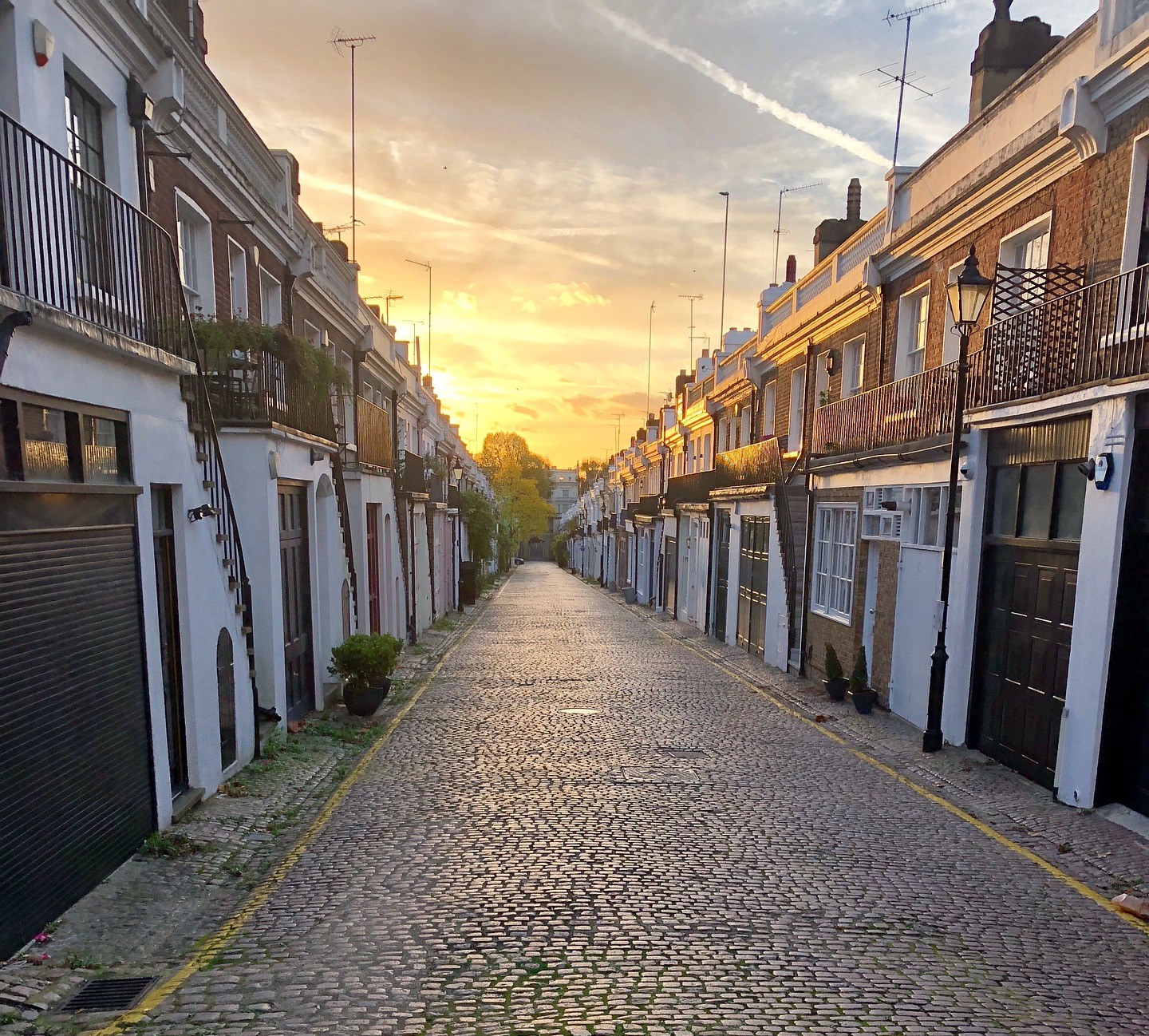Mews
Contents |
[edit] Introduction
The Penguin Dictionary of Architecture (third edition) was published in 1980. It was created for Penguin Reference and compiled by John Fleming, Hugh Honour and Nikolaus Pevsner.
It defines a mews as: ‘A row of stables with living accommodation above, built at the back of a townhouse, especially in London. They are now nearly all converted into houses or “mews flats”’.
As a tertiary type of road or street, a mews is generally a type of service lane that provides access to properties within a residential area. The benefit of a mews is that it provides access to the home, but it redirects the noise and pollution (including service vehicles) away from the front entrance, which is typically situated on the other side of the building.
[edit] History
Usage of the term mews originated with the royal stables in the UK, which are referred to as the Royal Mews. These stables were built in the 1500s on a site that was the former location of the royal hawk mews. It is believed that the word ‘mews’ is associated with the French word, ‘muer’, which means to moult - thus the connection between mews and hawks. One advantage of this system was that it hid the sounds and smells of the stables away from the family when they were not using the horses.
After its introduction in royal terminology, its usage was often applied to city-based domestic stables that had dwellings above them. The term mews became commonplace throughout the English speaking world in the 17th and 18th century.
Traditionally, the humble living quarters above the mews - sometimes nothing more than a hayloft - were for members of the serving staff who were only given a cleared out space for sleeping. It was unusual to find windows in the living quarters of a mews, perhaps due to the cost or lack of necessity.
Meanwhile, the family lived in the more luxurious portion of the home that opened out to the main street. Sometimes a tunnel would have been built so the servants could travel between the stables in the back of the house and the front of the house without disturbing the family.
[edit] The modern day mews
As the public shifted its reliance from horses to motorised vehicles for private transportation in the 20th century, the term mews became associated with residential buildings that incorporated the original configuration of a residence situated above garages - which would have previously been stables.
In modern times, mews are often quiet alleys that are considered to be relatively secure. They tend to have little vehicular traffic, other than that which is directly associated with their residents.
[edit] Related articles on Designing Buildings Wiki
Featured articles and news
RTPI leader to become new CIOB Chief Executive Officer
Dr Victoria Hills MRTPI, FICE to take over after Caroline Gumble’s departure.
Social and affordable housing, a long term plan for delivery
The “Delivering a Decade of Renewal for Social and Affordable Housing” strategy sets out future path.
A change to adoptive architecture
Effects of global weather warming on architectural detailing, material choice and human interaction.
The proposed publicly owned and backed subsidiary of Homes England, to facilitate new homes.
How big is the problem and what can we do to mitigate the effects?
Overheating guidance and tools for building designers
A number of cool guides to help with the heat.
The UK's Modern Industrial Strategy: A 10 year plan
Previous consultation criticism, current key elements and general support with some persisting reservations.
Building Safety Regulator reforms
New roles, new staff and a new fast track service pave the way for a single construction regulator.
Architectural Technologist CPDs and Communications
CIAT CPD… and how you can do it!
Cooling centres and cool spaces
Managing extreme heat in cities by directing the public to places for heat stress relief and water sources.
Winter gardens: A brief history and warm variations
Extending the season with glass in different forms and terms.
Restoring Great Yarmouth's Winter Gardens
Transforming one of the least sustainable constructions imaginable.
Construction Skills Mission Board launch sector drive
Newly formed government and industry collaboration set strategy for recruiting an additional 100,000 construction workers a year.
New Architects Code comes into effect in September 2025
ARB Architects Code of Conduct and Practice available with ongoing consultation regarding guidance.
Welsh Skills Body (Medr) launches ambitious plan
The new skills body brings together funding and regulation of tertiary education and research for the devolved nation.
Paul Gandy FCIOB announced as next CIOB President
Former Tilbury Douglas CEO takes helm.
UK Infrastructure: A 10 Year Strategy. In brief with reactions
With the National Infrastructure and Service Transformation Authority (NISTA).























